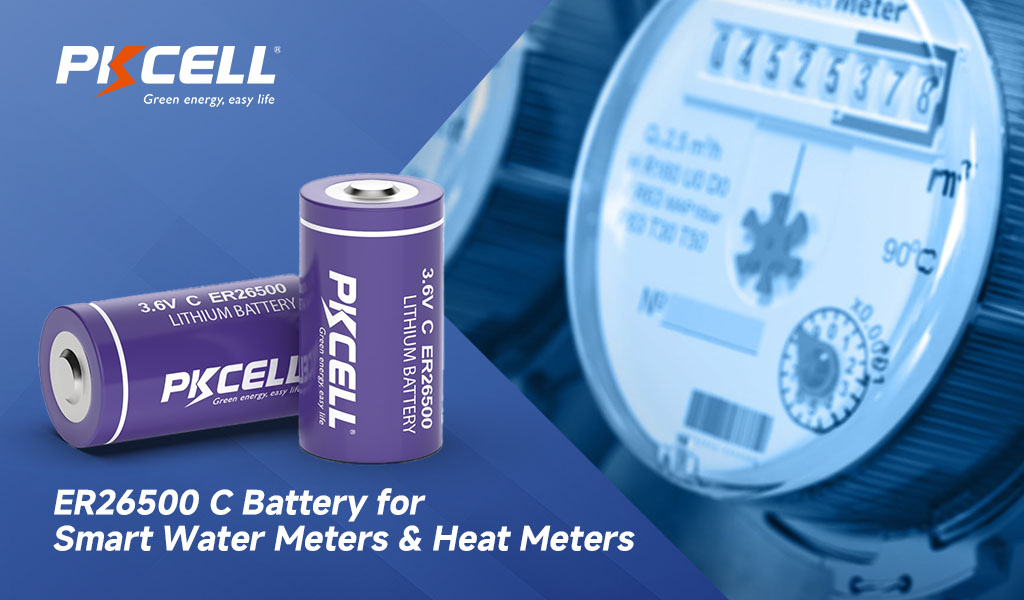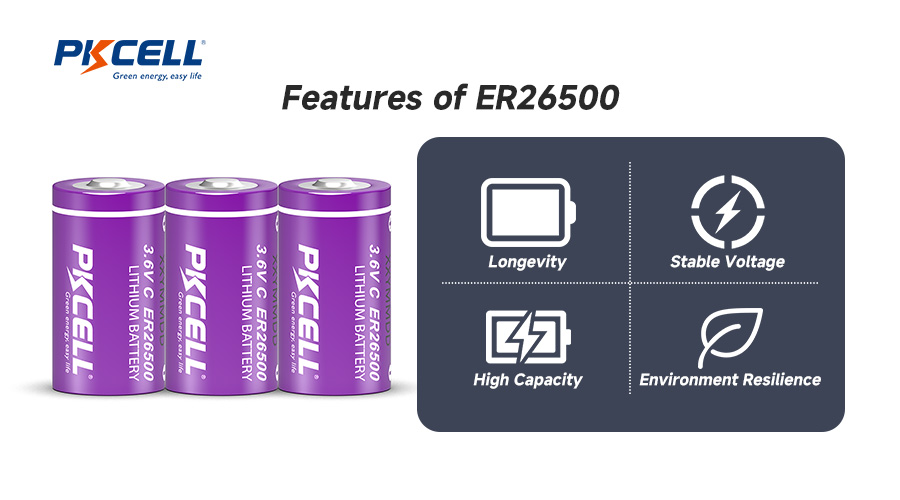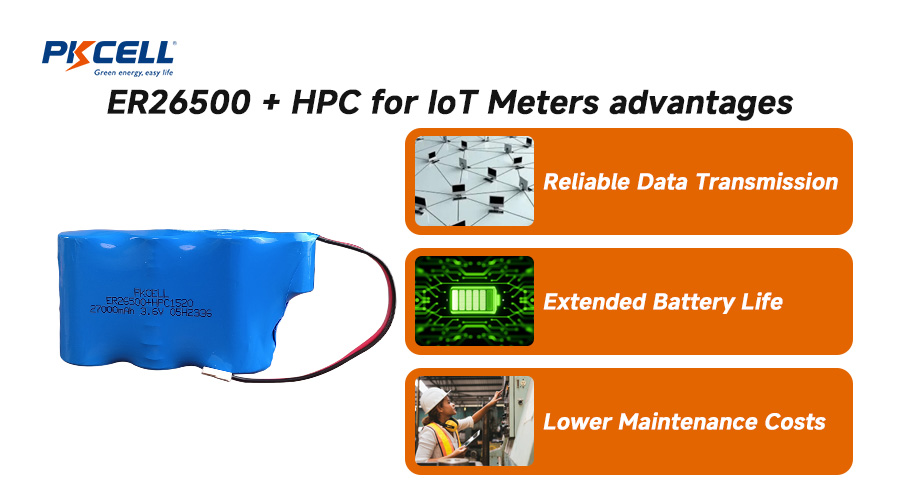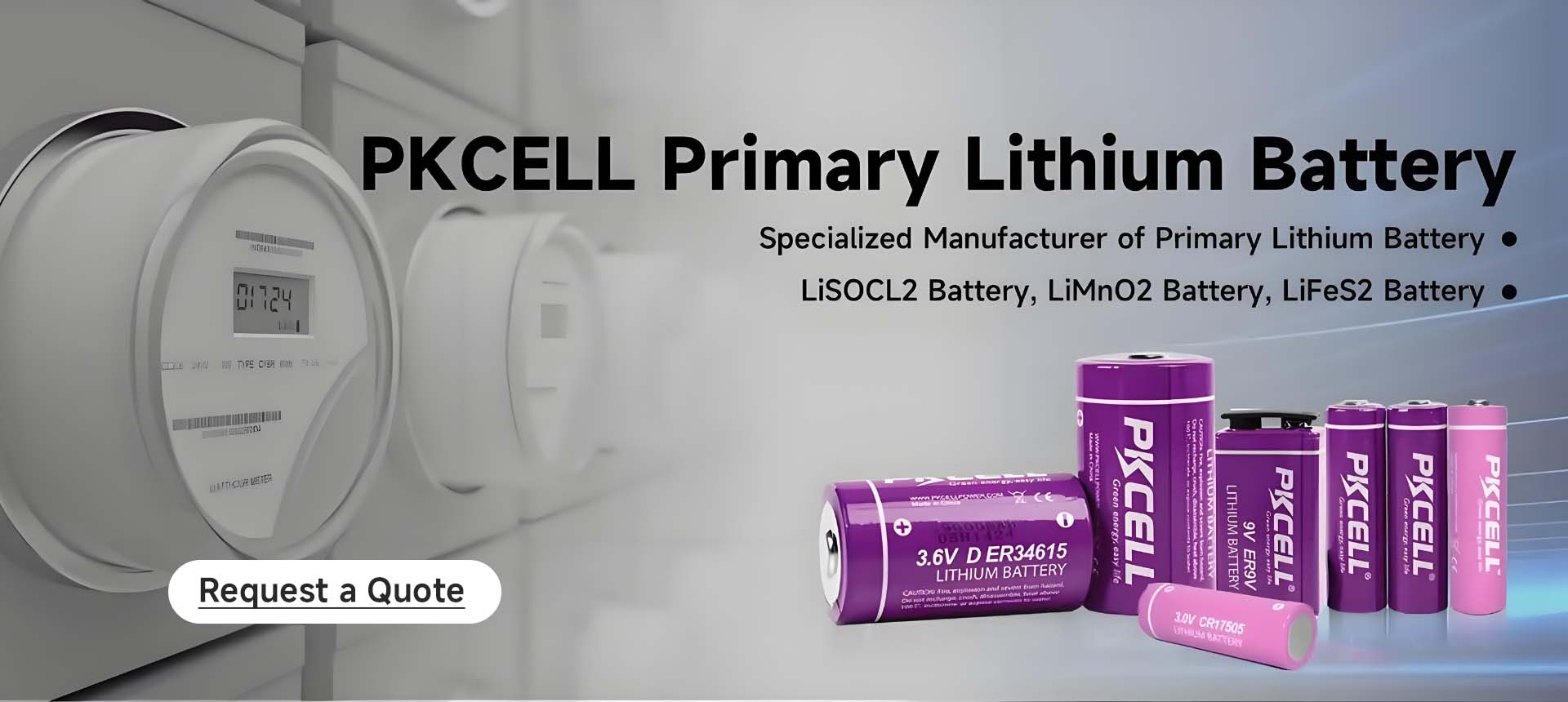Introduction: Why Power Solutions Matter in Smart Utilities
Smart meters form the backbone of utility IoT systems. They are designed to record usage data and transmit it to utility providers in real time or at regular intervals. This enables accurate billing, early leak detection, and demand forecasting.
However, even the most advanced meter is only as good as its power source. A meter installed underground, in remote areas, or inside a harsh environment must run reliably for years—often more than a decade—without direct maintenance. This makes battery selection one of the most important decisions for meter manufacturers and utility providers.
For this reason, the ER26500 C lithium-thionyl chloride (Li-SOCl₂) battery has become a leading choice. When paired with a Hybrid Pulse Capacitor (HPC), it creates a power system that balances long life, high pulse capability, and durability in extreme conditions.
Challenges in Powering Smart Meters
Unlike traditional meters, smart versions need continuous, reliable power to run internal electronics and maintain wireless communication. Whether they use NB-IoT, LoRa, or RF communication modules, the demand for stable energy is significant.
This demand is further complicated by the fact that many meters are deployed in hard-to-access locations. A water meter might be installed in a pit that floods occasionally. A heat meter could sit inside a high-temperature basement pipeline. In both cases, the power solution must survive where regular consumer batteries would fail.
The challenge of powering smart water and heat meters comes down to three main issues:
- Longevity – Meters are expected to last 10–20 years. Changing batteries mid-cycle can be extremely costly.
- Pulse Demands – Wireless communication requires short bursts of high current, which many long-life batteries struggle to deliver.
- Environmental Resistance – From freezing winters to humid basements, conditions are often harsh.
This is why manufacturers look beyond standard alkaline or lithium-ion batteries. They require specialized primary lithium solutions, capable of both long-term energy delivery and handling short, high-power pulses.
ER26500 C Battery Overview
Chemistry and Structure
The ER26500 is a C-size battery based on lithium-thionyl chloride (Li-SOCl₂) chemistry. This chemistry is known for its exceptionally high energy density (up to 730 Wh/L) and a nominal voltage of 3.6V.
Its cylindrical structure and robust construction allow it to handle harsh environments while maintaining stable performance over years of operation.
Specifications
| Parameter | Specification |
|---|---|
| Model | ER26500 (C size) |
| Chemistry | Lithium Thionyl Chloride (Li-SOCl₂) |
| Nominal Voltage | 3.6 V |
| Capacity | 8500 mAh – 9000 mAh (typical) |
| Energy Density | Up to 650 Wh/kg |
| Operating Temperature | -55°C to +85°C (extended range available up to +150°C with special design) |
| Standard Discharge Current | 5 – 50 mA |
| Maximum Continuous Current | 150 mA |
| Maximum Pulse Current | 200 mA – 400 mA (with capacitor support for high pulse) |
| Storage Life | ≥ 10 years (low self-discharge <1% per year at +20°C) |
| Diameter | 26.0 ± 0.5 mm |
| Height | 50.0 ± 0.5 mm |
| Weight | Approx. 50 g |
| Terminals | Standard button top / customized tabs / solder pins available |
| Typical Applications | Smart water meters, heat meters, gas meters, IoT devices, AMR systems, sensors |
You may download ER26500 datasheet to learn more.
Key Features
- High Energy Density – Enables long-term use in low-drain applications.
- Low Self-Discharge – Typically less than 1% per year, ensuring stored energy is preserved.
- Wide Temperature Range – Works reliably from –55°C to +85°C.
- Long Shelf Life – Can be stored for over 10 years with minimal capacity loss.
Because of these attributes, the ER26500 is widely adopted in metering, asset tracking, and other IoT applications requiring years of autonomous operation.
Why ER26500 is Preferred for Smart Meters
Smart water and heat meters demand a balance of long life and high reliability. The ER26500 battery meets these demands in several ways:
- It ensures 10–15 years of operation, depending on transmission frequency.
- Its stable voltage curve allows electronics to operate consistently throughout battery life.
- Its resistance to moisture and temperature fluctuations makes it suitable for underground and industrial environments.
Compared to alkaline or lithium-ion, ER26500 provides superior durability with far less risk of premature depletion. This is why it has become a standard power source across the smart utility sector.
The Role of Hybrid Pulse Capacitors (HPC)
While the ER26500 excels in long-term energy delivery, it has limitations when it comes to high pulse currents. Communication modules such as NB-IoT often require sharp bursts of 200mA–2A, which a standard Li-SOCl₂ battery can not supply without a voltage drop.
This is where the Hybrid Pulse Capacitor (HPC) comes in.
An HPC is designed to store small amounts of energy and release it instantly when the device needs a high-power pulse. When paired with the ER26500, the battery supplies long-lasting baseline energy, while the capacitor handles the high bursts needed for data transmission.
Together, they form a hybrid power system that maximizes performance without sacrificing longevity.
Hybrid System: ER26500 + HPC for IoT Meters
When combined, the ER26500 C battery and the HPC provide a solution that overcomes the limitations of either component used alone.
- ER26500 supplies long-term, stable energy over years of operation.
- HPC manages high-power pulses for wireless communication.
This hybrid system ensures:
- Reliable Data Transmission – No dropped signals due to voltage collapse.
- Extended Battery Life – ER26500 is preserved since pulse stress is offloaded to the HPC.
- Lower Maintenance Costs – Utility providers avoid costly field battery replacements.
In real-world deployments, this combination has proven effective in achieving 15–20 years of uninterrupted operation, even in remote locations.
Applications in Smart Water and Heat Meters
Both smart water and heat meters benefit significantly from the ER26500 + HPC hybrid system.
Smart Water Meters
These meters are often placed underground, where humidity and temperature swings are common. They require stable performance in wet environments. The ER26500 ensures long life, while the HPC guarantees that every communication pulse reaches the utility’s data center reliably.
Heat Meters
Heat meters are frequently exposed to high ambient temperatures due to proximity to hot water pipes or heating systems. The wide temperature tolerance of the ER26500 makes it especially suited to these environments, while the HPC supports wireless data transfer without interruption.
In both cases, utilities benefit from accurate, uninterrupted monitoring without frequent service calls.
Comparison: ER26500 vs Other Power Options
| Feature | ER26500 Li-SOCl₂ | Alkaline | Lithium-Ion Rechargeable | With HPC Hybrid |
|---|---|---|---|---|
| Energy Density | Very High | Low | Medium | Very High |
| Operating Life | 10–15 years | 2–3 years | 3–5 years | 15–20 years |
| Temperature Range | –55°C to +85°C | 0°C to +50°C | –20°C to +60°C | –55°C to +85°C |
| Pulse Handling | Limited | Poor | Moderate | Excellent |
| Maintenance Requirement | Very Low | High | Moderate | Very Low |
This comparison shows why ER26500 with HPC has become the dominant choice for IoT smart metering systems.
Future Outlook: Hybrid Power in IoT Applications
As IoT continues to expand, the demand for long-lasting, maintenance-free power solutions will only grow. Beyond smart meters, hybrid systems using Li-SOCl₂ batteries and HPCs are expected to power devices such as:
- Industrial sensors
- Asset trackers
- Smart city infrastructure
- Remote monitoring devices
In each case, the hybrid approach balances efficiency, reliability, and cost-effectiveness—qualities that will define the next decade of IoT power solutions.
Conclusion
The success of smart water and heat meters depends heavily on reliable power. The ER26500 C Li-SOCl₂ battery, when paired with a Hybrid Pulse Capacitor, offers an unmatched solution. It ensures long life, handles pulse loads with ease, and withstands harsh conditions where other batteries fail. For utility providers, this hybrid approach means fewer maintenance visits, more reliable data collection, and lower total costs. As smart cities evolve, hybrid power systems are set to become the gold standard in metering and beyond.
Why Choose PKCELL as Your ER26500 Supplier
PKCELL provides reliable ER26500 batteries with proven performance in smart water and heat metering projects worldwide. We support utilities and OEMs with bulk supply, offer customization options such as tabs and pack assemblies, and ensure safe global deployment with full certifications. Trusted by leading metering companies, PKCELL delivers both quality and scale for long-term success.
Partner with PKCELL today and power your next smart metering project with confidence.
FAQs
Q1: Why is the ER26500 preferred for smart meters?
Because it combines high energy density, long service life, and wide temperature tolerance, making it ideal for meters installed in tough environments.
Q2: What role does the Hybrid Pulse Capacitor play?
It supplies the high current bursts required for wireless data transmission, preventing voltage drops and extending battery life.
Q3: How long can a smart water meter run on ER26500 with HPC?
Typically 15–20 years, depending on transmission frequency and environmental conditions.
Q4: Can alkaline or lithium-ion batteries replace ER26500 in smart meters?
Not effectively. Alkaline lacks longevity, while lithium-ion requires recharging. Li-SOCl₂ with HPC is the most reliable choice.
Q5: Are hybrid systems more expensive upfront?
Yes, but they reduce maintenance costs and replacements, making them more cost-effective over the device’s lifespan.
Post time: Sep-01-2025









